|
Trooper Sydney Moore
D-Day June 1944
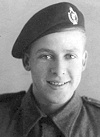
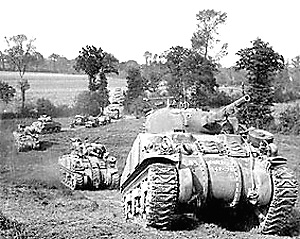
There was still a great deal of last minute training and equipment issuing in the countdown to D-day including the issuing of ‘Bags Vomit ’. On 1st May the order arrived to start the regimental move to their Invasion holding area, Gibraltar Barracks, Aldershot. This was so the regiment could be nearer to their embarkation port. The crews spent their time ‘waterproofing’ their tanks and installing a bunch of new equipment that was being issued at the last minute like new gun sights, armoured ammunition storage bins and infantry phones that would enable soldiers on the outside of the tank to talk to the crews if they needed to.
Each tank was given a new coat of paint. External equipment bins had to be fitted to the rear of the turret so that the crew’s personal kit like blankets, rations, bivouac tents and water could be stored. There were fears that the thin armour of the Sherman tanks could not withstand a hit from a German anti-tank gun. For added protection spare metal tank track links were welded onto the external tank armour by the crews. Every tank engine was serviced to make sure they did not let them down in France. Each tank was labelled so that it would be sent to the right ship and arrive at the correct destination at the right time in accordance with the instructions in the Operation Overlord plan.
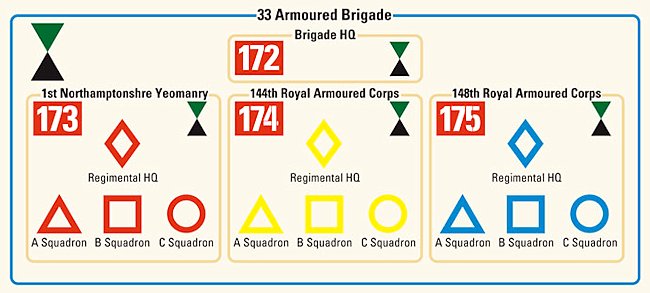
33rd Armoured Brigade and 144th Regiment Royal Armoured Corps in 1944 D-Day and Normandy Tank Markings.
Sid's Tank would have a white number 174 on a red square
background on the back and front of the tank along with an
inverted green triangle over a black triangle Brigade badge. The
turret would have a yellow triangle, square or circle on the
side depending what Squadron he was in.
The regiment planned to be ready for active service by the end of May. They achieved this. They had no idea when the invasion would start. If there was any time left over they could relax. May had been kind. The weather was fine and hot. All the necessary tasks were carried out in comfort. Extra rations had been made available for meal times. The joke around the barracks was that the Government was fattening them up on purpose.
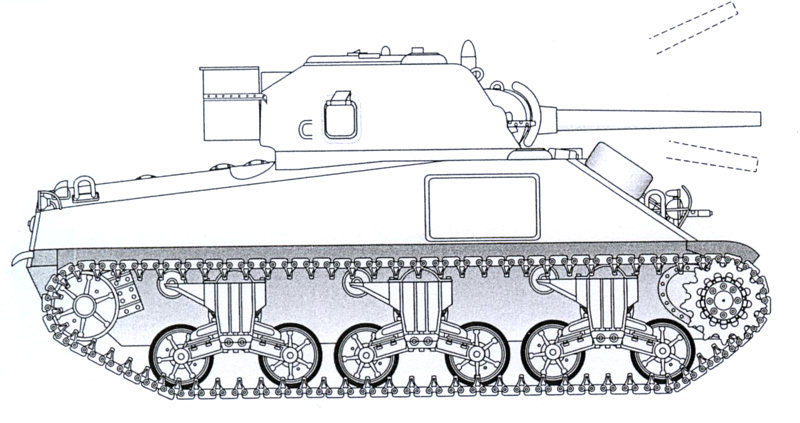
M4 Sherman Tank as used by the 144th Regiment Royal Armoured Corps in 1944
Just to show you how well the invasion date was kept secret let me tell you what happened with Sid’s Regiment. To keep the troops active a rifle shooting competition was arranged. At 10 am on 6th June 1944 a dispatch rider arrived with news that the invasion had started and he delivered new orders. All crews were sent back to barracks to await orders. The 144th RAC Regiment was to Land in France on the 14th June 1944. Nine days after the initial landings. The orders stated that they were to work in support of the 49th Infantry Division and occupy an area near the French village of Creully in preparation for an advance to Villers Bocages. Sid and the rest of the Sherman tank crews were ordered to report to the riding school buildings where the Commanding Officer briefed them. They now knew where they were going and when.
The regiment moved out of Aldershot on 9th June. They had to spend time in a long organised traffic jams as each unit waited to be called up to embark its designated ship. The weather had changed. It was typical Wimbledon Tennis weather, wet and miserable. The crews spent three days enduring the rain. Some crews were luckier than others. If they were parked near fields they had to sleep under canvas but if their tank had been told to stop in a village many of the local people offered the tank crews shelter, food, drink and in some cases a warm dry bed.
Sid's tank finally got onto its seagoing transport ship on 14th June. He landed in France near Arromanches just north east of Bayeux on the Normandy Coast. His ship docked alongside the artificial pre-fabricated concrete Mulberry harbour that had been towed across the channel. In the 100 days after D-Day the Mulberry Harbours landed over 2.5 million men, 500,000 vehicles and over 4 million tonnes of supplies.
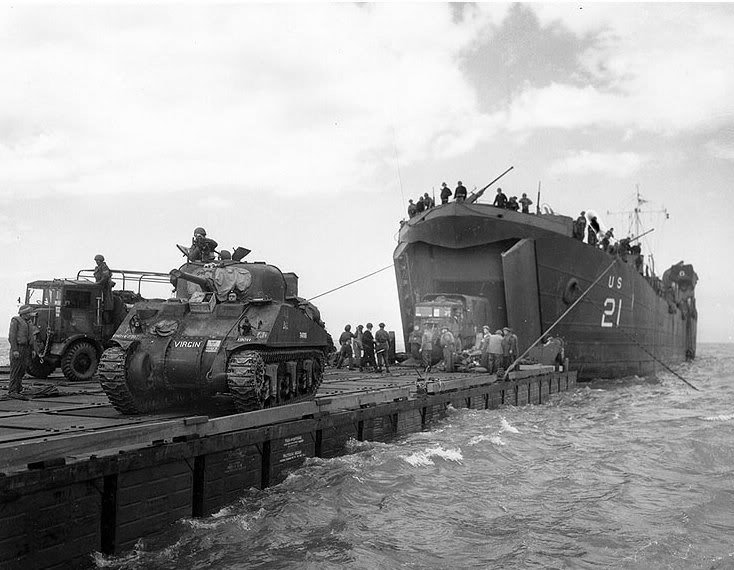
The sea voyage was uneventful. There was no sign of enemy action near the coast by that time in the invasion. The RAF and USAAF mastery of the sky meant that there were no enemy daytime bombers or fighters to worry about. The regimental orders were changed. Instead of going to Creully they were instructed to go inland to a point on the map two miles south of Bayeux. Sid and his crew drove through the attractive cobbled streets of this historic Normandy town. Many British soldiers were already enjoying themselves at the local hotels and café’s. This felt unreal. The regiment had prepared for war but their first experiences of France were of a country at peace. There was no enemy to be seen. It seemed like they were on just another exercise. Even the field they camped in looked like an English field. It had hedges all-around its boundaries. It was only at night when the anti-aircraft guns fired at a few German Bombers who tried to use the cover of darkness to attack the British Allied bridgehead on the beaches that they were reminded they were on a battlefield.
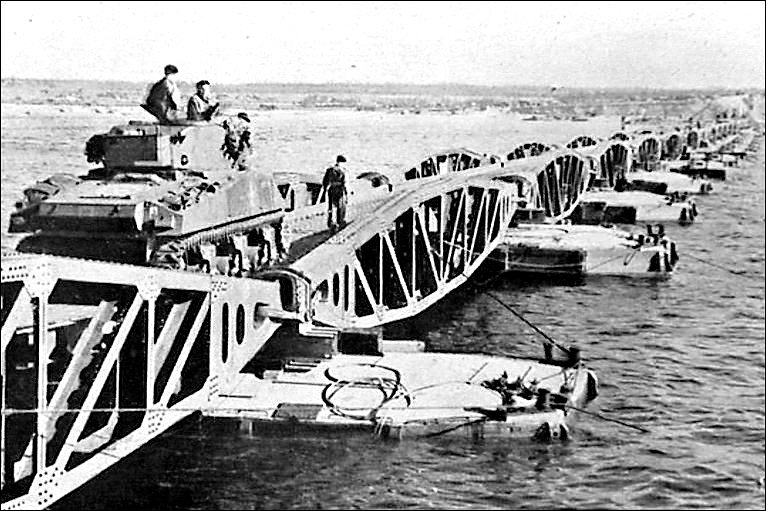
Books that cover
Op Totalize are 'Blue Flash' written by Alan Jolly (p47 covers
Sid) & 'No
Holding Back' by Brian A Reid
|

